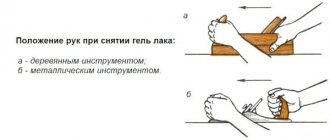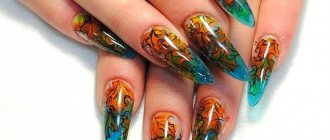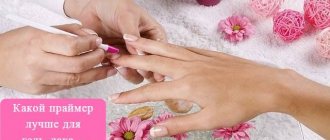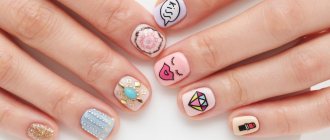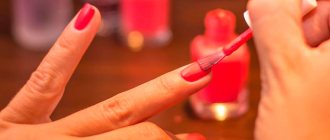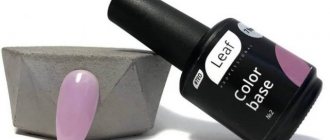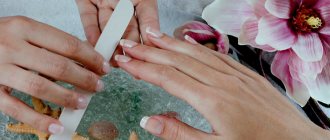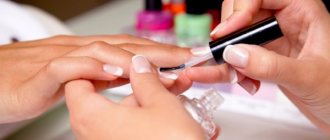An allergy to gel polish can occur in both the master and the client at any time - either immediately after applying the coating, or after several months of using it. Classic symptoms are rashes, redness, itching and burning, swelling of the skin of the fingers, and signs of respiratory damage may appear - shortness of breath, cough, sore throat, nasal congestion, sneezing, lacrimation.
It is the second type of allergy that is considered dangerous, because it develops into Quincke's edema - a condition that requires resuscitation measures.
Allergies are treated with tablets with an antihistamine effect, hormonal ointments can be used, and traditional methods can be used during the recovery period. The duration of therapy is 14-20 days, but it must be accompanied by constant consultations with a dermatologist.
Types of allergies to gel polish, how they manifest and look
An allergy to gel polish can manifest itself at any stage of such a complex manicure; reactions appear both to the remover and to each of the layers, and they all look different.
Types of allergies:
- On the composition of gel polish . Among the components of such a decorative coating are formaldehyde, toluene, phosphoric acid and other substances. They are all hyperallergenic and each individually can provoke an allergy.
- For bases, dehydrators, primers and bonders . The inadequate reaction is caused, for the most part, by contact of these materials with the skin. It is extremely rare that an allergy is recorded directly to the composition of the products.
- For the type of gel polish removal , masters use either the soaking method or treating the nail plates with a manicure machine. In the first case, the nails, together with the upper phalanges of the fingers, are packed in foil - prolonged “direct” contact with the solvent and lack of air circulation are the main causes of allergies.
- On incorrectly performed technology . More often, this factor “works” when a woman gives herself a manicure with gel polish. Even small amounts of materials coming into contact with the skin can cause unpleasant consequences.
- To ultraviolet . Occurs during drying of the coating in manicure lamps. This occurs only if photodermatosis is initially present or the skin of the hands is excessively sensitive to any external irritants.
In addition, allergies can be a general reaction of the body to irritating factors - for example, this is inherent in conditions when there is a pronounced weakening of the immune system. Often, a general inadequate reaction is observed during pregnancy, after suffering stress, or directly during an ongoing illness.
We recommend reading the article on how to restore nails after gel polish. From it you will learn about the main methods of restoring nails after gel polish, what problems you may encounter and how to restore nails at home. And here is more information about how to choose a lamp for gel polish.
On the fingers: they are itchy, swollen, blistered
Most often, an allergy to gel polish manifests itself on the fingers - they itch, swell, and the main symptoms of such a body reaction are:
- blisters are watery, small in size, which burst and eventually transform into ulcers;
- the “pads” of the fingers acquire a pronounced red color, and there is constant itching in these places;
- the skin around the nail becomes very dry, areas of peeling appear;
- There is a burning sensation in the area of the periungual ridges.
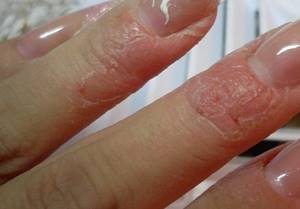
Similar symptoms are typical when materials come into contact with the skin (violation of manicure technology). Sometimes the allergy is diffuse in nature, and then all the symptoms will spread not only to the fingers, but also higher up the palms, right up to the wrist.
Such a reaction can appear immediately after applying the material or getting it on the skin, but sometimes it occurs only after 2-6 months of constant consistent manicure.
For nail degreaser
Allergy to nail degreaser is of the contact type and appears with classic symptoms:
- rashes small or large;
- redness of the skin;
- itching and burning sensation.

In especially severe cases, detachment of the nail plate from the bed is possible. Often such contact allergies extend not only to the hands, but also to the legs, neck and décolleté areas. The lesions resemble 1-2 degree burns.
As a rule, an allergy to a degreaser appears almost immediately after applying it to the nail plates. The first symptom will be increasing swelling of the skin around the nail plate.
On liquid to remove the sticky layer
Liquid for removing the sticky layer, regardless of the manufacturer, contains two required components:
- alcohol - this is what removes the sticky layer;
- water is a common diluent for the first component and minimizes its drying effect.
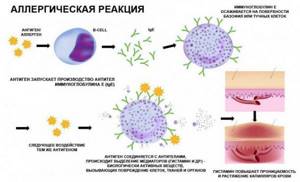
Manufacturers use fragrances and various cosmetic oils as additional ingredients; they have a beneficial effect on nails and finger skin. If, after using the liquid to remove the sticky layer, a burning and itching sensation appears on the skin, it acquires a red tint, then this indicates a local allergic reaction. After a short time, swelling of the fingers and palms begins, and a rash appears on the skin.
In this case, the provocateurs of an inadequate reaction of the body are precisely fragrances and oils, because alcohol, even in its “pure” form, extremely rarely becomes the cause of local allergies.
To Kodi base
The Codi base has a rubber base, has a transparent and thick structure, and allows the decorative coating to lie on the nail absolutely evenly. This type of base ensures ideal adhesion of the gel polish to the plate, is easily removed with a special liquid, and dries in an ultraviolet lamp in a maximum of 3 minutes. And it is to this material that allergies most often occur, because the composition contains methacrylate, a hyperallergenic substance.
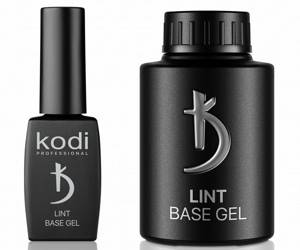
Kodi base
Symptoms of such an inadequate reaction are:
- severe itching of the skin around the nails;
- redness of the dermis, swelling/swelling;
- the formation of small rashes - blisters with serous fluid inside.
Usually this condition is quite easily treated by taking standard antihistamines - Suprastin, Tavegil, Zodak and other tablets.
Tavegil Zodak
Allergies to Codi base are always local, but since this material has a pronounced “chemical” aroma, people prone to such problems may experience signs of respiratory tract irritation.
Allergy to nail polish remover
Allergy to nail polish remover is the most common, because the main component in such materials is acetone; the process technology has a detrimental effect on the skin around the plate. As soon as the “compresses” are applied to the nails and sealed with foil, heating processes begin to occur inside due to the lack of air circulation.
The result can be damage to the skin of the “pads” of the fingers and the skin around the nail plates:
- intense peeling;
- cracks;
- rashes, even blisters with liquid contents.
The lesions are very itchy, and the victim constantly has a burning sensation. Such an allergy can begin after the initial use of nail polish remover, and after 6-10 months of its regular use.
Experts warn that the highest risk of developing an allergy to this material is in those who have overly sensitive skin, or have a history of inappropriate reaction to any external irritant.
The problem is solved quite simply:
- using liquids without acetone in the composition to remove decorative coatings;
- using a manicure machine.
In the first case, you will only need to keep your nails “packed” in foil longer and remove the remaining gel polish with a wooden (orange) stick. In the second, it is advisable to exclude allergies to dust or work in a special protective mask.
Gel polish remover clips Dust mask with carbon filter Gel polish remover without acetone Orange sticks
For nail primer
Nail primer is a product with degreasing, drying and cleansing properties, which must be applied to the nail plate before using the base and then gel polish. But often it is to this material that a woman becomes allergic, although only when the product comes into contact with the skin around the nail plate or the cuticle.
Its symptoms appear immediately:
- the woman feels a strong burning sensation (burning);
- the skin takes on a pronounced red tint;
- Swelling of the dermis may begin (the swelling spreads and increases literally “before our eyes”).
Allergy to nail primer often occurs in those who are already “familiar” with the problem of inadequate reaction to external stimuli, and by warning the nail technician about this, you can eliminate the possibility of such a side effect. To treat nails, you can use acid-free primers (they are gentle on the plate and do not cause allergies if they come into contact with the skin) or bonders .
Primer acid-free Bonder
For nail dust
An allergy to dust from nails can occur in both the master and the client; it can become a characteristic “companion” if a manicure machine is used to remove the decorative coating. In this case, we are talking about a respiratory type of inadequate reaction, which is manifested by the following symptoms:
- sore throat, dry cough, frequent sneezing;
- runny nose, swelling of the nasal mucosa and, as a result, difficulty breathing;
- the skin in the eye area becomes red, profuse lacrimation and itching in the corners of the eyes are disturbing.
Respiratory allergies are much more dangerous than ordinary contact allergies, because they can lead to rapidly developing angioedema. The problem can be solved by using a special protective mask, refusing to machine the coating, and working in a well-ventilated area.
Reusable dust mask Disposable dust mask
For gloves from a manicurist
Manicurists must work with gloves, but often an allergy develops to this item of protection - the body reacts inadequately to rubber and silicone.
Regular gloves are coated with monomer, a material that prevents air circulation, which leads to increased sweating on the palms. The created greenhouse effect in itself can lead to allergies, but the specialist often gets literally drops of primer, gel polish, base on the skin of his fingers - there are no extraneous sensations, and the beginning of an allergy will be laid.
What experts recommend to manicurists:
- lubricate the skin of your palms and fingers with your usual fatty cream before putting on gloves;
- first use thin cotton ones, then rubber/silicone ones;
- wash all brushes thoroughly, especially if they are made of wood – substances that irritate the skin accumulate in it;
- Do not allow gel polish to come into contact with any manicure materials.

For cuticle oil
An allergic reaction to cuticle oil is possible only when using strong irritants - for example, if the composition contains oil/fragrance of rose, honeysuckle, watermelon, and so on.
For work, you should choose a material with the most neutral components - almond oil, olive oil, shea butter. You need to carefully monitor the reaction of the cuticle during application of the product and, if classic symptoms of irritation appear, remove the applied layer with water or any suitable degreaser.
Natural oil for cuticles and nails Mayur Natural Shea butter Cuticle oil Almond Nila 30 ml
With such a reaction, it is better to use regular hand cream to treat the cuticle and skin around the nail plate.
To a UV lamp
If a woman has a history of photodermatosis, or her hand skin is overly sensitive, then an allergy may develop when the coating layers are dried in an ultraviolet lamp. In the absence of these provoking factors, this is impossible. Allergy symptoms are identical to sunburn:
- burning sensation;
- itchy skin;
- redness of the dermis;
- small rashes or blisters;
- active peeling.
If you have this problem, drying gel polish in a UV lamp is strictly prohibited; you should use varnishes without drying for manicure or use modern LED lamps. In this case, it is important to avoid exposure to ultraviolet rays on the skin.
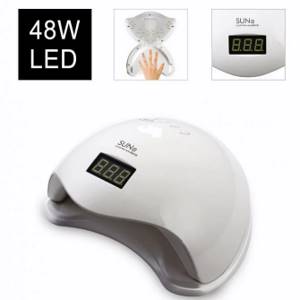
Use modern LED lamps
Causes and symptoms of allergies in a manicurist
A manicurist may have a contact or respiratory allergy; in the first case, characteristic symptoms will be present:
- the formation of small blisters that have liquid contents and periodically burst, transforming into ulcers;
- the skin becomes noticeably dry, actively flakes and turns red;
- there is a strong burning sensation;
- severe itching bothers me, the fingers themselves, and the space between them, and the entire palm itch;
- swelling of the “pads” of the fingers, the nail fold, may be accompanied by pain;
- The nail plates begin to delaminate; in especially severe cases, the nail may completely move away from the bed.
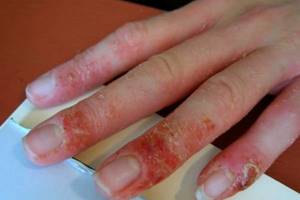
Signs of respiratory allergies:
- difficulty breathing, shortness of breath;
- runny nose, copious mucous discharge from the nasal passages;
- swelling of the tongue and lips;
- sore throat, dry paroxysmal cough;
- profuse lacrimation;
- frequent sneezing;
- itching in the eye area and tip of the nose.
Contact allergies take a very long time to treat, and complete restoration of the skin is often impossible. An inadequate respiratory reaction of the body is fraught with Quincke's edema, which poses a danger to human life.
Watch the video about what an allergy to gel polish is and how to avoid it:
Restoring damaged fingers and nails
To restore the skin on your fingers and nails, it is recommended to follow some rules:
- The first step is to eliminate the allergen. Contact with gel polish is prohibited; nail polish remover should not come into contact with your fingers, as it contains a lot of chemicals. They will make the condition worse. It is better to refuse manicures.
- The skin of your hands and fingers must be lubricated with moisturizing creams.
- Herbal baths are performed at least twice a week.
- Wash your hands with soap without fragrances or dyes so as not to worsen the condition.
- You need to take vitamins A and E. They will help you recover faster.
- Painful areas should not be rubbed or scratched, as this will make them heal more slowly.
- Ointments prescribed by a doctor are regularly applied to the damaged areas.
If the damage was severe, the patient experienced onycholysis, it is recommended to take the drugs Ketoconazole, Fluconazole, which help restore the nail plate and strengthen it.
In this case, sea salt baths are also suitable. To prepare it, mix a tablespoon of salt and 500 ml of warm water. Hands are kept in the resulting solution for 20 minutes, the procedure is carried out twice a week.
These measures will help the nails and skin on your fingers recover faster.
Is there a hypoallergenic gel polish?
Hypoallergenic gel polishes were developed by manufacturers specifically for people prone to inadequate body reactions to external irritants, these include:
- gel polishes from PUF;
- UNO LUX - all manicure materials belong to the premium class category, there are no recorded cases of allergies to them;
- rubber bases Rio Profi and Grattol;
- CND - this company is the founder of the production of all materials for gel polish coating; there has not been a single review of allergies from masters or their clients.
1 of 5
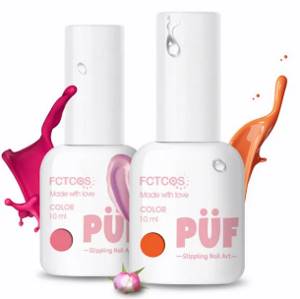
Gel polishes from PUF
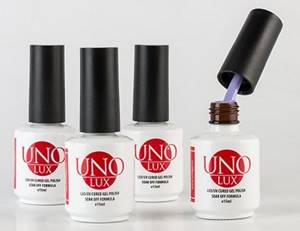
Gel polishes from UNO LUX

Rubber base Grattol
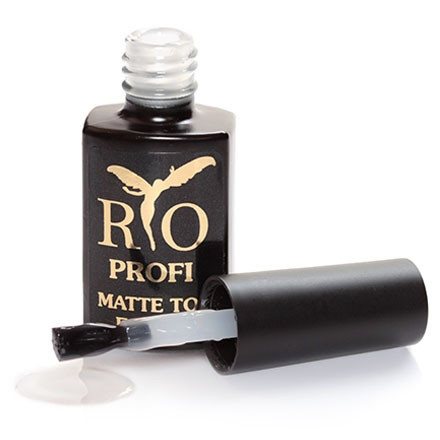
Rubber base Rio Profi

CND shellac
The use of hypoallergenic gel polishes does not guarantee a safe manicure, because allergy sufferers have a weakened immune system and it is impossible to predict what its reaction to a specific composition or individual components will be.
Low-quality antiseptics
There are two types of antiseptics:
- Medical antiseptics
- Antiseptics (sanitizers) produced by cosmetic companies, or the same companies that produce gel polishes.
If you want to minimize the possibility of allergies, and at the same time disinfect the skin of your hands and gloves as much as possible, use medical antiseptics. These antiseptics meet all necessary standards. And the main thing is that they practically do not cause allergies.
Cosmetic antiseptics (aka sanitizers) cannot protect the skin as well as medical ones, but this is not the main thing. The main thing is that cosmetic antiseptics contain additives in the form of aromatic fragrances (mango, vanilla, aloe), as well as dyes. These same fragrances and dyes can often cause allergies.
Allergy to gel polish: how to treat it and how
The doctor must decide how and how to treat an allergy to gel polish: he will isolate a specific allergen through laboratory tests and prescribe antihistamines and symptomatic therapy.
It is important, when the first symptoms of this condition appear, to immediately seek qualified medical help, because the disease can be severely neglected - and it can transform into atopic dermatitis, eczema, or it can last until swelling of the larynx, suffocation and the need for complex resuscitation measures.
Pills
You can take Suprastin, Tavegil, Cetrin, Zodak and other classic antihistamine tablets for a short course on your own. It is imperative to monitor the dynamics of the condition - after taking it, it may improve or worsen, which will definitely need to be reported to the doctor. And first you need to get rid of the decorative coating - remove it in a salon/by a specialist or on your own, then consult a dermatologist.
Suprastin Cetrin
If the allergic reaction is primary, then a 5-day intake of antihistamine tablets is usually sufficient to restore the integrity of the skin and relieve all symptoms. Often, ointments and creams are additionally prescribed to quickly improve the condition. In especially severe cases, hormonal therapy with corticosteroid drugs is possible.
Taking allergy medications is advisable only if they are prescribed by a doctor and a full course of therapy is carried out.
Traditional methods
Of the folk methods of getting rid of allergies, baths with decoctions of medicinal herbs are considered the most effective:
- series;
- chamomile flowers;
- Oak bark;
- calendula flowers.
They are prepared in the classic way: take 1 tablespoon of plant material per 200 ml of water, boil everything in a water bath for 5-7 minutes, cool and strain. Keep your fingers and, if necessary, palms in the finished concentrated decoction for 10-15 minutes. After the procedure, the hands are dried naturally (in the air) and lubricated with a suitable cream with anti-inflammatory, wound-healing and nourishing properties.
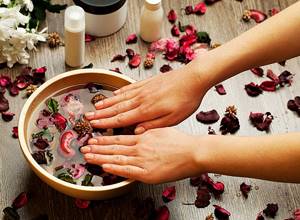
A good way is to use a saline solution - place 1 tablespoon of the product in a glass of warm water and keep your fingers/palms in the prepared “brine” for 10 minutes. This method provides rapid restoration of damaged skin, but is not suitable for existing tissue damage.
Berry purees from black currants and strawberries also have wound-healing properties. The berries are simply pureed, the finished product is applied to the nails and allergy-affected skin, the procedure takes 10 minutes, the duration is at least 2 weeks daily. You can add aloe juice and olive oil to the finished puree, which will improve its healing properties.
It is strictly forbidden to use traditional methods in the acute stage of an allergic reaction. They are only good during the recovery period, when you need to speed up the skin healing process.
What explains the popularity of Shellac coating?
Shellac is a nail coating that combines two bases - gel and varnish.
Due to this, the manicure is not only bright, modern, but also sustainable.
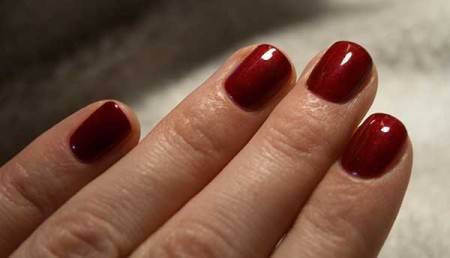
Those who have already taken advantage of improving the appearance of their nails using Shellac highlight several main advantages of this nail design:
- Durability of the coating. Properly applied shellac will not change color, crack or fall off for at least two weeks.
Strengthening nails. Before the procedure, the nails and cuticles themselves are processed, but to apply gel polish there is no need to remove the top layer of the nail plate; it is only lightly polished. Such care and subsequent application of shellac can strengthen the nail plate. Shellac gives nails a shine that does not change under the influence of water, ultraviolet radiation, or cosmetics. Gel polish dries very quickly and therefore you don’t have to spend a lot of time on a manicure session. Variety of shades. Today, elite salons offer a choice of more than 200 shades of Shellac, which are perfect for both young ladies and women who follow a certain working style. If necessary, you can remove the coating yourself. To do this, you need to buy a special product for safe removal of gel polish in advance.
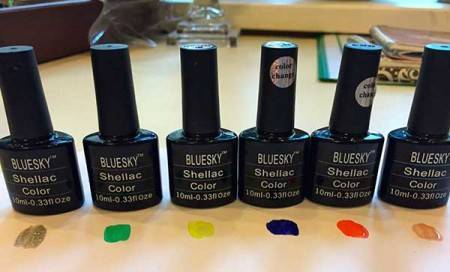
Shellac coating is done in beauty salons, but if you wish, you can learn how to professionally do a similar manicure at home.
Many girls use Shellac gel polish almost constantly and do not notice any negative aspects of this manicure.
But sometimes an allergy occurs to this coating, which manifests itself with very specific symptoms.
When such a problem arises, girls are primarily concerned with the question of whether it is necessary to completely abandon gel polish, and why an allergy to it occurs.
What should a technician do if he is allergic to gel polish?
If the master is allergic to gel polish, then he is recommended to do his work in compliance with the following nuances:
- if work on applying a decorative coating is carried out with gloves, then they should be changed for each client;
- Always carry out activities wearing a protective mask, it should not be an ordinary medical one, it is better to choose a special one made of dense but porous material;
- additional protective measures should include glasses or a screen that will prevent accidental contact of drops of material on the skin and eye area;
- the dermis must be well protected - it is worth working in clothes with long sleeves;
- Your arsenal must have a powerful vacuum cleaner and a fan that will quickly and efficiently clean the air from “chemical” odors and dust from filed nails;
- Do not remove the sticky layer from all fingers with one napkin, but take it separately for each - it is better to spend money on consumables than later on treating contact allergies.
Watch the video about what to do if the artist is allergic to gel polish:
If you are allergic to nail extension materials
If the artist is allergic to nail extension materials (acrylic), then you should not refuse it either. Experts believe that an inadequate reaction occurs only if the process technology is violated - for example, if the master:
- works without protective gloves, goggles and a mask;
- use your own fingers/nails to remove excess acrylic in the area of the rollers around the plate;
- uses the same brushes for materials as for primer, top, base and gel polish;
- works in a poorly ventilated area.

All manicurist bottles must be clean.
You can work in a mask, gloves, with a hood, but not pay any attention to how your tubes, bottles, and brushes are maintained. Do you keep them clean? Are there any gel polish residues on them?
It is important to wipe them with a soft cloth with antiseptic/alcohol at the end of the working day. This way you will always keep all your bottles neat, and at the same time remove the remains of gel polish/base if you accidentally stain them.
Why is this needed:
You are a master and you have just released a client. They cleaned everything up, threw the used gloves in the trash, and started putting their gel polishes, bases and everything else on the shelves... But bad luck - bottles in gel polish, or something else, and here we take it all with our bare hands. As a result, we have every chance of getting an allergy to our own gel polishes.
Can you be allergic to shellac?
An allergy to shellac often does not appear immediately, but after several months of constantly “wearing” such a decorative coating. The reason for this is called methacrylate, a polymer that is part of shellac and belongs to the category of hyperallergenic, harmful and even toxic compounds.
Symptoms of such an allergy are:
- skin rashes are small and eventually take the form of blisters;
- the nail plate is very peeling;
- swelling of the dermis around the nail, local tissue temperature rises;
- the skin becomes dry and flaky.

If the symptoms spread “ascendingly,” then clearly defined red spots with signs of peeling in the center may appear in the area of the palms and hands. Often, an allergy to shellac is respiratory in nature, in which case the first symptoms will be a sore throat, shortness of breath and nasal congestion.
Treatment for an allergy to shellac involves taking antihistamines, but only after a doctor's prescription. You will definitely need to remove the decorative coating and not apply it to your nails until complete recovery. Otherwise, the allergen will have a detrimental effect, and this can lead to rotting processes in the nail bed and complete rejection of the nails.
Poor or no ventilation
If you breathe gel polish fumes for one hour every two weeks, most likely there will be no reaction. However, the master is forced to “enjoy the aromas” of gel polish every day, for 4-5 hours a day, or even longer. The result is problems with the respiratory system of allergic origin. If the room has poor ventilation or no ventilation at all, and windows are rarely opened for ventilation, the likelihood of developing an allergy becomes even higher.
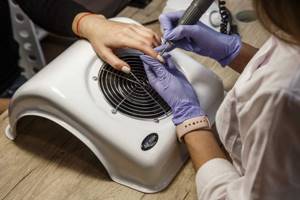
Craftsmen working from home are at risk. Ventilation in apartment buildings is not designed for such a load: to protect yourself, you need to equip your workplace with a special hood.
How to avoid allergies to gel polish
To avoid an allergy to gel polish, you must first tidy up your nails and skin with care procedures - masks, baths, peelings, and the use of creams will relieve excessive dryness and sensitivity, which is a predisposing factor. In addition, it is recommended:
- use only high-quality products in your work - it will be more expensive, but your health will not become worse;
- choose a master with a diploma and a license for such work, who works only with original materials and follows basic sanitation rules;
- the gel polish should polymerize as quickly as possible, and the lamp should be powerful and dry the coating in a maximum of 2-3 minutes;
- After a manicure, be sure to apply oil (if you are not allergic to it) or a moisturizing, oily cream to the cuticles and skin around the nails.
Watch the video on how to stop allergies to gel polish:
You definitely need to take breaks from wearing gel polish, during which you should take a course to strengthen your nail plates and improve the health of your hand skin.
What can cause allergies: list of allergens
Any chemical composition used in manicure and nail design can provoke an allergic reaction. Such means include:
- Acrylic powder and liquid
- Gel system for extensions
- Acrylatic
- Top coat, base coat
- Degreaser, dehydrator
- Primer, bond – acidic and acid-free
- Gel polish
- Acid or alkaline cuticle remover for unedged manicure
- Products for removing extended nails and gel polish
- Glue for fixing tips
- Antiseptics and disinfectant solutions for treating hands and working surfaces of the cabin.
Methacrylate is a synthetic component found in acrylic, extension gel and gel polish. It is this that most often leads to allergies when extending and covering nails with gel polish.
Methacrylate is one of the components of varnishes, gel polishes and gels, mainly from the low price segment. If such means are used rarely, then there is no danger. Otherwise, methacrylate gradually accumulates in the nail plates. After creating a certain concentration, a violent allergic reaction develops. Please note that the chemical also often causes the following pathologies:
- paronychia - inflammation of the skin around the nail;
- onycholysis - separation of the plate from the nail bed.
In addition to methacrylate, in almost any product that is used during procedures, there are at least 3 components that can provoke allergies. Remember the most aggressive ones:
- Toluene
- Formaldehyde derivatives
- Acetophenone
- Butyl acetate
- Nickel balls used in anti-thickening varnish bottles
- Phosphoric acid
- Nitrocellulose
- Rosin
- Nitrocellulose
- Diacetone alcohol
The more they come into contact with the nail, the higher the likelihood of irritation and inflammation of the periungual ridges. If you are predisposed to allergies, you should resort to a three-phase manicure, when the plate is protected by a colored layer.
Health hazards of gel polish and its components
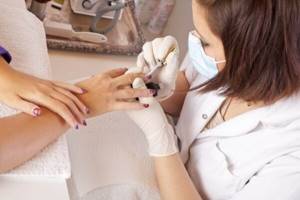
Alternative to gel polish for allergies
If gel polish is strictly contraindicated for use due to allergies, then you can use alternative options:
- the use of varnishes with vitamins in their composition, which belong to the medicinal category - they have the same structure and look on the nails in the same way as gel polishes in nude shades;
- use classic varnish, but cover it with a top coat - this will extend the life of the decorative coating;
- wearing gel polishes with weekly fixation.
We recommend reading the article about the difference between gel polish and shellac. From it you will learn what is the difference between gel polish and shellac, what is better and what is more harmful, and also how to extend the wearing period. And here is more information about how to do a French manicure with gel polish.
An allergy to gel polish can develop even in those who have never encountered such problems. It can be an acute reaction to the material or appear after several months of constant wearing of such a decorative covering. The problem can only be solved by consulting a dermatologist and taking a therapeutic course with antihistamine tablets. Traditional methods will only help at the recovery stage.
Delayed allergy – difficulty in diagnosis
The reaction to manicure may be delayed in time and appear after a few days or a week.
- The reason is the slow cumulative effect of exposure to toxins or allergens from varnish, acrylic or gel coating that penetrate the nails and the body several hours or days after the procedure.
- The second reason is long-term wearing of extended nails and gel polish manicure without breaks, from a month to a year. The absence of visible signs of allergic reactions to manicure (itching, irritation, redness of the skin) immediately after application initially excludes this cause. The first symptoms have appeared - it is worth considering it too.
Fighting occupational allergies
The most radical - and, as a rule, the most effective way to combat “occupational allergies” may be to change your occupation. In second place in terms of effectiveness is the use of personal protective equipment against allergens - respirators, gloves, closed clothing. Unfortunately, it is not always possible to change jobs or really limit contact with a substance that causes an allergic reaction. In this case, the treatment prescribed by the doctor is of utmost importance.
Among antiallergic drugs, you should give preference to those that do not cause drowsiness, and also remember to take sorbents regularly. For example, Enterosgel is a highly effective modern enterosorbent that will help remove allergens and toxins from the body as quickly as possible.
Gloves
Allergies mainly occur to latex gloves.
Fortunately, there are alternatives: vinyl and nitrile. Also, there are complaints about products with talc, so it is better to choose products without it (i.e., powder-free). However, sometimes the reason for negative reactions lies in the fact that many craftsmen refuse to use gloves due to sweaty hands and general discomfort during work. However, the absence of this protective element causes more problems than its presence.
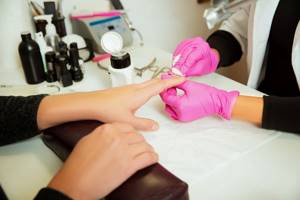
Common mistakes made by experts:
- wrong size selection;
- work in one pair of gloves all day (need to be changed every 3-4 hours and/or after each client);
- cleaning the workplace, sterilizing instruments and performing other manipulations without gloves;
- work in torn gloves (need to be changed immediately, even if the tear is very small).
Meanwhile in the office...
Unfortunately, office workers are not immune from allergies. Air conditioners, printers, copiers, computers and other office equipment attract dust and bacteria like a magnet, which provoke allergic reactions. And employees of libraries, foundations and archives suffer from allergies to dust mites, which live in abundance in such institutions.
In addition, tobacco, cotton, linen and wood dust are among the most common allergens. Workers in the grain and light industries, all those associated with flour milling, confectionery, and especially tobacco production, are at risk for allergies.

